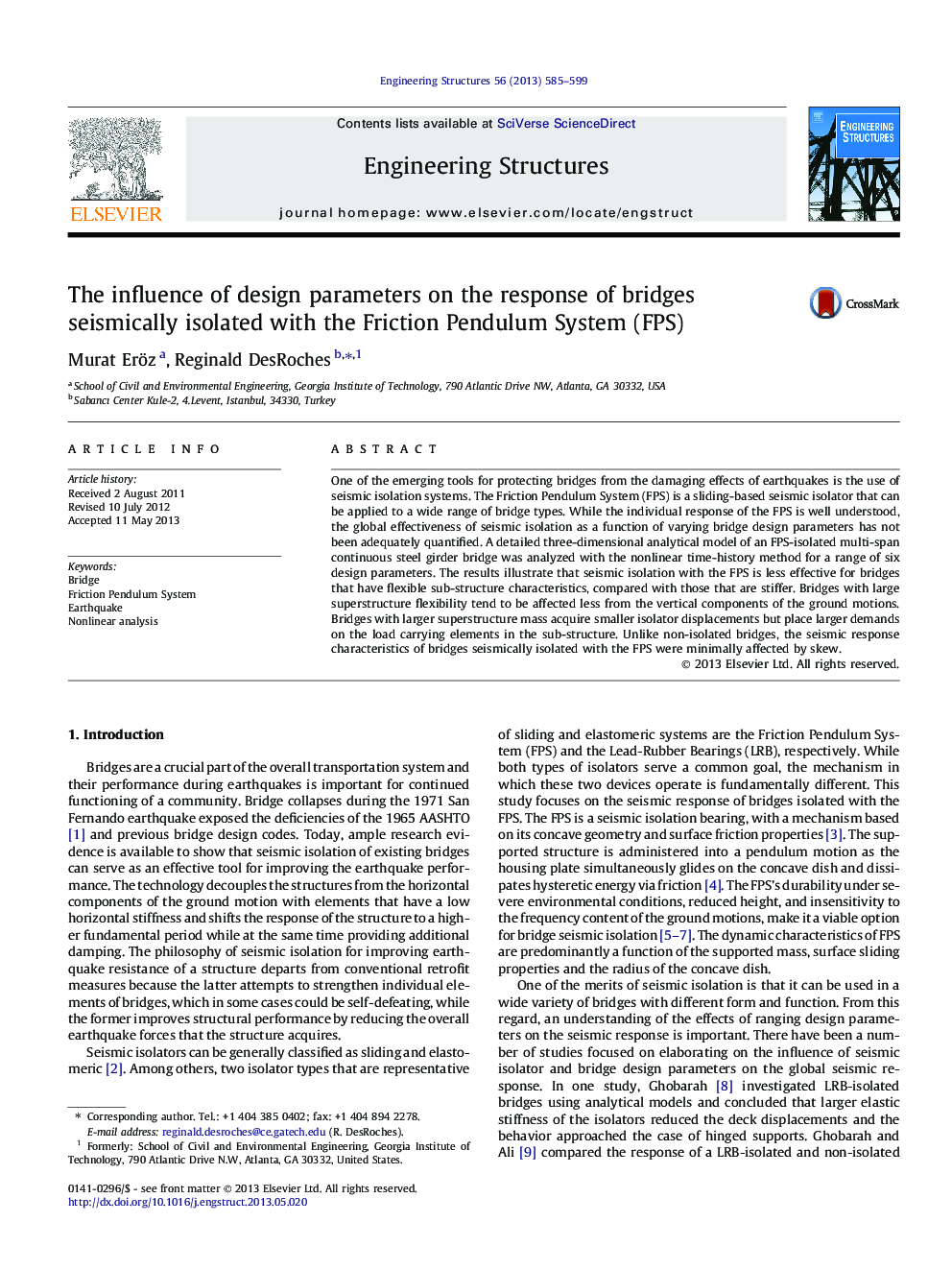| Article ID | Journal | Published Year | Pages | File Type |
|---|---|---|---|---|
| 6741367 | Engineering Structures | 2013 | 15 Pages |
Abstract
One of the emerging tools for protecting bridges from the damaging effects of earthquakes is the use of seismic isolation systems. The Friction Pendulum System (FPS) is a sliding-based seismic isolator that can be applied to a wide range of bridge types. While the individual response of the FPS is well understood, the global effectiveness of seismic isolation as a function of varying bridge design parameters has not been adequately quantified. A detailed three-dimensional analytical model of an FPS-isolated multi-span continuous steel girder bridge was analyzed with the nonlinear time-history method for a range of six design parameters. The results illustrate that seismic isolation with the FPS is less effective for bridges that have flexible sub-structure characteristics, compared with those that are stiffer. Bridges with large superstructure flexibility tend to be affected less from the vertical components of the ground motions. Bridges with larger superstructure mass acquire smaller isolator displacements but place larger demands on the load carrying elements in the sub-structure. Unlike non-isolated bridges, the seismic response characteristics of bridges seismically isolated with the FPS were minimally affected by skew.
Related Topics
Physical Sciences and Engineering
Earth and Planetary Sciences
Geotechnical Engineering and Engineering Geology
Authors
Murat Eröz, Reginald DesRoches,
